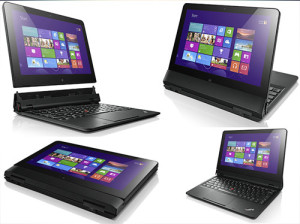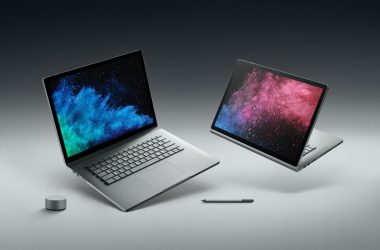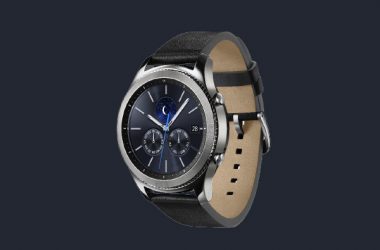“Convertible” Ultrabooks – full-fledged laptops that can also function as touch-driven tablets – have become something of a commodity these days, so my attention goes to the manufacturers who can do something flashy and new with the idea. Enter Lenovo’s ThinkPad Helix, a highly usable tablet-laptop aimed at “businesses, vertical and educational markets, as well as the technology enthusiast.”
Whereas businesses will be keen on the Intel Core processor and TPM security chip under the hood, the enthusiasts will surely be interested in a feature of the Helix that Lenovo calls “Rip ‘n Flip.” The main unit can be docked with the keyboard, but with the screen facing either toward the user or away. Dock with the screen facing away, and you can use the machine in “stand” mode. Close the unit with the screen facing out, and you have a tablet with a tucked-away keyboard. It’s a great idea, and in practice it’s only slightly clumsier than having a system with a 180-degree hinge, but with the additional advantage that you can leave the dock behind when you want to.
The dock provides a comfortable keyboard with the pleasantly clicky key action I’ve come to expect from the ThinkPad line, as well as not one but two pointing devices: a generously sized, multi-touch-enabled touchpad and a nub mouse. The top, bottom, and center of the touchpad all have mechanical click sensors. Between the touchpad, the nub, and the touchscreen you can’t complain about a lack of input options. Another bonus is the dock’s secondary battery, which together with the main unit provided approximately six hours of runtime in my Netflix battery rundown test.
Most striking about keyboard-dockable tablets is the variation in the build quality of the docks themselves. What I’ve seen ranges from the fantastic to the flimsy. The Helix’s dock is mostly plastic, but it’s on the sturdier side of the docks I’ve examined. Two fanglike prongs protrude from the mouth of the dock to guide the tablet into place. To release the unit from the dock, you press in a switch on the left side of the connector. I was a little worried about snagging one or more of those protruding pieces on the corner of a desk or something, but thankfully this never came to pass.
Note that the vast majority of the weight in the dock is in the connector, which causes the Helix to tip over backward if it’s perched on a precarious surface — say, your lap. The battery seems to provide enough counterweight to keep the unit on an even keel if you’re using it on a flat surface like a desktop, but be careful otherwise.
Today’s Ultrabooks give off a lot less heat than previous generations of laptops, but there’s still a real need for creative ventilation solutions. The Helix places its heat vent along the top edge of the machine, slightly to the right. This is generally a good place for it unless you hold the tablet in portrait mode — it’s a bad idea to put a hand over the vent, and the back of the unit near the vent can get surprisingly warm as well. But the dock doesn’t generate any heat of its own. In fact, the dock has a fan that blows cold air up into the attached unit to provide additional cooling.
Both the dock and the tablet are well-outfitted with connectors and ports. The power connector — Lenovo’s USB-connector-like plug — fits in either the dock or the unit, and the dock delivers two USB ports to augment the unit’s one USB port. Note that the USB connectors are on the bottom of the tablet, so you can use only the dock’s USB ports when the unit is attached.
The oddest omission is the lack of an SD card slot, MicroSD or conventional, in either the unit itself or the dock. It’s not fatal, but anyone who depends on an SD card — photographers, for instance — will be irked. What looks like SD card slots on the underside of the unit are actually a pair of “label trays,” slide-out drawers that contain regulatory information. Apparently Lenovo incorporated these trays to avoid putting said labels on the unit itself.
The preloaded software in the system is the usual mix of consumer-oriented apps such as Symantec’s Norton AntiVirus and the Lenovo Solution Center, which lives in the System Tray and nags you about updates or the lack of virus protection. There’s also the QuickLaunch app, which attempts to re-create the legacy Start button and Start menu. (I wonder how QuickLaunch will fare when Windows 8.1 comes out.)
Lenovo’s ThinkPad Helix is the latest attempt to create a convertible Ultrabook that can be used in multiple display modes. It’s on the pricey side — twice the cost of Lenovo’s IdeaPad Yoga – but it’s no slouch, and the Helix surpasses the Yoga in the way it implements multiple display orientations. And like the Samsung Ativ Smart PC Pro 700T, which lags the Helix in both usability and build quality, it’s the rare Ultrabook that can leave its physical keyboard behind.






